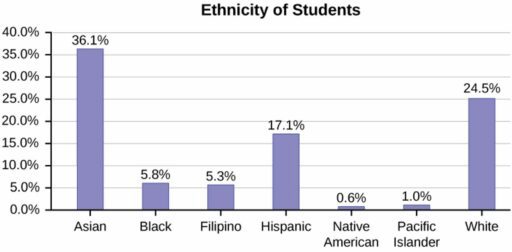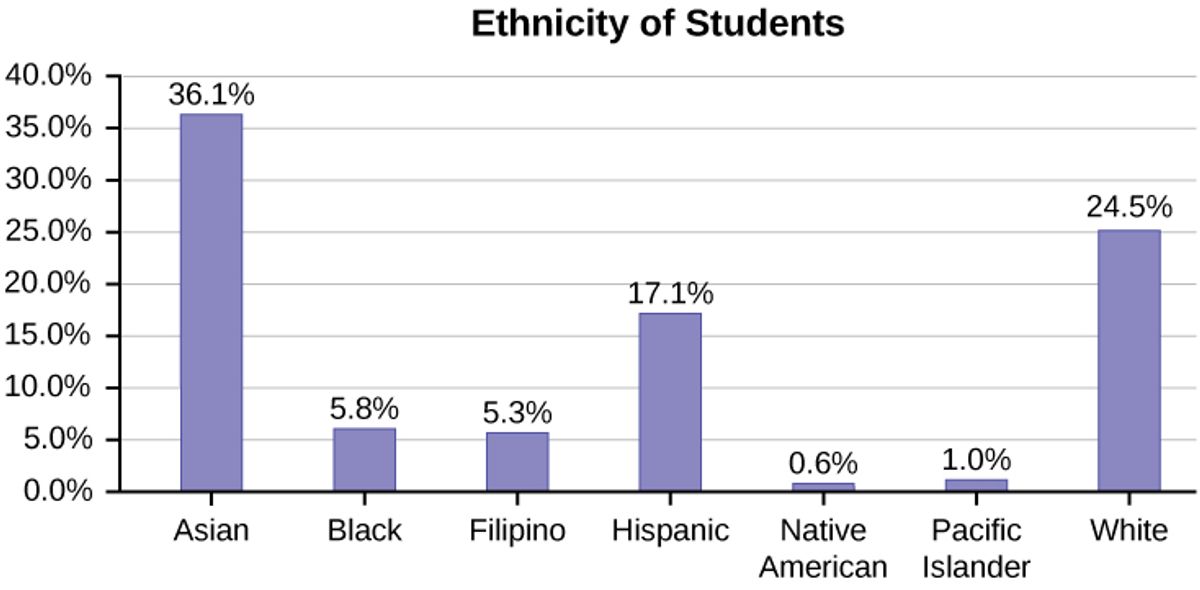Table of Contents
In the realm of research, data is the cornerstone that guides conclusions and drives decision-making. Understanding the distinct characteristics and applications of quantitative and qualitative data is crucial for researchers across various fields. This article, ‘Navigating the Numbers: Exploring the Differences Between Quantitative and Qualitative Data,’ delves into the nuances of these two fundamental types of data, their research methodologies, and how they can be integrated to provide a comprehensive analysis. We will also consider the human element in data interpretation and the strategic use of mixed methods research.
Key Takeaways
- Quantitative research focuses on numerical data and statistical analysis, while qualitative research deals with non-numerical data, aiming to understand underlying motivations and experiences.
- Quantitative methods are structured and aim for generalizability, using closed-ended questions, whereas qualitative methods are flexible, context-rich, and employ open-ended questions.
- Human judgment plays a critical role in interpreting data, with qualitative insights adding depth to quantitative findings and aiding long-term decision-making.
- Tech giants like Amazon, Google, and Netflix integrate quantitative and qualitative data to inform business processes, leveraging the strengths of each for a holistic strategy.
- Mixed Methods Research (MMR) should be considered when both numerical precision and in-depth understanding are needed, with careful design to address research questions comprehensively.
Understanding the Spectrum: Quantitative vs. Qualitative Data


Defining Quantitative and Qualitative Data
In the realm of data analysis, two distinct types of data emerge: quantitative and qualitative. Quantitative data is numerical, allowing for measurement and statistical analysis. It’s the backbone of structured research, providing clear, objective figures that can be easily compared and visualized. For example, a table showcasing the number of users engaging with various data science articles might look like this:
| Article Topic | User Engagement |
|---|---|
| Data Science | 1500 |
| Python | 1200 |
| Random Forest Algorithm | 900 |
| SEO | 700 |
On the other hand, qualitative data delves into the non-numerical, the subjective experiences and observations that bring depth to our understanding. It’s about the nuances that numbers alone can’t capture, such as the reasons behind a user’s preference for articles on creative data visualization techniques over those on making money with data science.
Qualitative data is extremely important as it can change the nature of our quantitative understanding. It provides context, enriching the raw numbers with insights into human behavior and decision-making processes.
While quantitative data can be seen as the ‘what’ and ‘how much’, qualitative data answers the ‘why’ and ‘how’. Together, they form a comprehensive picture, informing more effective strategies and decisions.
The Nature of Data in Research
In the realm of research, data serves as the foundation upon which conclusions are drawn and theories are built. Quantitative research deals with numerical data that can be quantified and subjected to statistical analysis. This type of data is essential for testing hypotheses, measuring variables, and determining relationships. On the other hand, qualitative research focuses on non-numerical data, such as words, images, or observations, aiming to understand concepts, thoughts, or experiences in depth.
The purpose of quantitative research is to gather numerical data to quantify phenomena or relationships with statistical precision. It employs structured data collection methods, often using closed-ended questions, resulting in data typically in the form of numbers and statistics. Conversely, qualitative research gathers non-numerical data to understand underlying motivations, perceptions, and behaviors, aiming to explore and uncover insights and nuances.
Data overload can be a significant challenge in qualitative research. Researchers must find ways to manage and organize data to ensure that no important insights are missed. This often involves using software, creating coding systems, and employing visual aids such as graphs and charts to help identify patterns.
Here is a succinct representation of the differences in data types between quantitative and qualitative research:
| Aspect | Quantitative Research | Qualitative Research |
|---|---|---|
| Purpose | Quantify phenomena | Understand insights |
| Data Type | Structured, numerical | Non-structured, text |
| Collection Methods | Closed-ended | Open-ended |
Understanding these differences is crucial for researchers to select the appropriate type of data and research methodology that aligns with their specific objectives.
Research Objectives and Data Types
The alignment of research objectives with appropriate data types is crucial for the success of any study. Quantitative research is often driven by the need to quantify phenomena and establish patterns or relationships through numerical data. This approach is well-suited for testing hypotheses and measuring variables with statistical precision. On the other hand, qualitative research delves into the realm of meanings and experiences, seeking to uncover the underlying motivations and perceptions that numbers alone cannot convey.
| Aspect | Quantitative Research | Qualitative Research |
|---|---|---|
| Purpose | Measure phenomena | Understand experiences |
| Data Type | Numbers, statistics | Text, images, videos |
| Data Collection | Structured, closed-ended questions | Unstructured, open-ended interviews |
The choice between quantitative and qualitative data types should be guided by the research question at hand. It’s not merely a technical decision but a strategic one that shapes the direction and potential impact of the study.
Both data types have their place in the research landscape, and the decision to use one over the other—or a combination of both—should be informed by the specific goals and nature of the inquiry. While quantitative data lends itself to generalizability and statistical analysis, qualitative data provides depth and context, offering a rich tapestry of insights that can inform and enhance quantitative findings.
The Methodologies: Diving into Quantitative and Qualitative Research
Structured vs. Flexible Approaches
Quantitative research often employs structured approaches, where methods and procedures are predefined and rigorously followed. This structure is essential for ensuring consistency and reliability of data, which can be neatly presented in tables or charts. For example, a study on educational outcomes might use a table like this:
| Grade Level | Average Score | % Passing |
|---|---|---|
| 6th Grade | 82.5 | 78% |
| 7th Grade | 85.0 | 81% |
| 8th Grade | 87.2 | 85% |
Qualitative research, on the other hand, thrives on flexibility. It allows researchers to delve into the nuances of human behavior and social phenomena, adapting their methods as needed. This approach is less about numbers and more about understanding the depth of experiences and perspectives.
In qualitative research, the focus is on capturing the richness of the data, which often involves open-ended questions and discussions that cannot be easily quantified.
While structured methodologies can sometimes be perceived as rigid, they provide a framework that can be crucial for comparative analysis and generalization. However, qualitative research methods, such as interviews and observations, are designed to be more adaptive, reflecting the complexity and variability of the subjects being studied.
Generalizability vs. Contextual Depth
In the realm of research, quantitative data is often lauded for its generalizability, allowing for broad application of findings across different contexts. This strength is particularly evident in studies designed for hypothesis testing and establishing causality. Quantitative research typically focuses on internal validity and reliability, achieved through rigorous design and control mechanisms.
On the other hand, qualitative data shines when it comes to providing contextual depth. It is invaluable for exploring complex phenomena and generating new hypotheses. Qualitative research emphasizes validity through methods like triangulation and seeks credibility of findings, even if reliability may be considered less critical compared to quantitative approaches.
The choice between generalizability and contextual depth is not merely a methodological preference but a strategic decision that aligns with the research objectives.
Here are some examples illustrating the differences:
- Quantitative: Surveys with closed-ended questions, controlled experiments.
- Qualitative: Ethnography, case studies, in-depth interviews.
Ultimately, both quantitative and qualitative research require meticulous design, clear research questions, and ethical considerations to ensure meaningful and actionable insights.
Closed-Ended vs. Open-Ended Data Collection
In the realm of user research, the distinction between closed-ended and open-ended questions is pivotal. Closed-ended questions, often found in structured interviews, provide specific, quantifiable answers. They are essential for gathering data that can be easily compared and statistically analyzed. For instance, a structured interview may use closed-ended questions to ascertain demographic details or opinions on a Likert scale.
Conversely, open-ended questions are the cornerstone of qualitative data collection, offering a window into the respondent’s perspective. These questions are integral to semi-structured interviews, where the flexibility to probe deeper is available. They yield rich, narrative data that can reveal unexpected insights and the nuances of human experience.
Incorporating both types of questions in research can lead to a more comprehensive understanding. While closed-ended questions solidify the foundation with hard numbers, open-ended questions build upon it by adding context and depth.
To illustrate the balance between these data collection methods, consider the following table showcasing a customer satisfaction survey:
| Question Type | Example | Data Collected |
|---|---|---|
| Closed-Ended | How satisfied are you with our service? (1-5) | Quantitative Ratings |
| Open-Ended | What could we do better? | Qualitative Feedback |
The Integration Challenge: Combining Quantitative and Qualitative Insights


Balancing Data with Human Intuition
In the realm of data-driven decision-making, human intuition plays a pivotal role. Quantitative data provides a solid foundation of empirical evidence, but it often falls short when predicting long-term outcomes. This is where human judgment becomes indispensable, especially in scenarios involving second-order effects and systemic thinking.
That is why it’s critical to know when human judgment needs to kick in.
For example, Amazon’s approach to integrating quantitative and qualitative insights has been instrumental in their long-term strategic success. The company’s decisions, such as the introduction of Amazon Prime, were not solely based on immediate data but also on a deep understanding of customer behavior and market trends.
- Recognizing when to rely on data
- Understanding the limitations of quantitative analysis
- Emphasizing the importance of human intuition
Avoiding narrative fallacies requires a balance between data and intuition. While data can guide short-term decisions, intuition is often necessary to navigate the complexities of long-term planning and the potential impacts of those decisions.
Connected Analysis Frameworks
Integrating quantitative and qualitative research requires a robust framework that can accommodate the strengths of both data types. The points of integration are two-fold: first, the rich insights from qualitative analysis can guide the development of quantitative measures; second, quantitative data can validate and extend the qualitative findings.
In practice, this means that qualitative data might reveal patterns that inform the creation of a survey or experiment, while the results of these quantitative methods can confirm or challenge the initial qualitative observations.
To illustrate, consider the following table showing a simplified integration process:
| Step | Qualitative Input | Quantitative Validation |
|---|---|---|
| 1 | User Test Insights | Survey Design |
| 2 | Hypothesis Formation | Experiment Execution |
| 3 | Pattern Identification | Statistical Analysis |
Each step represents a critical juncture where qualitative and quantitative data intersect, leading to a more comprehensive understanding of the research subject.
Case Studies: Tech Giants’ Data Strategies
In the realm of tech giants, the strategic use of data is a cornerstone of success. Companies like Google, Amazon, Netflix, and Microsoft have developed sophisticated data strategies that serve as a blueprint for others in the industry. These strategies often hinge on the balance between quantitative and qualitative insights.
Quantitative data is crucial for operational excellence. For instance, inventory management and order fulfillment rely heavily on numerical data to optimize efficiency. Here’s a snapshot of how quantitative data underpins various business processes:
| Process | Quantitative Data Role |
|---|---|
| Inventory Management | Tracking stock levels and predicting demand |
| Orders’ Fulfillment | Streamlining logistics and minimizing delays |
| Product Recommendation | Analyzing customer behavior and preferences |
| A/B Testing | Measuring the impact of changes on user engagement |
The integration of quantitative and qualitative data allows businesses to not only streamline operations but also to innovate and personalize user experiences.
Qualitative data, on the other hand, provides the context and human judgment necessary to interpret the numbers. It’s the qualitative insights that guide the fine-tuning of algorithms for content recommendation and spam detection, ensuring that the services remain relevant and user-friendly.
The Human Element: Recognizing the Role of Judgment in Data


The Importance of Human Judgment in Data Interpretation
Despite advancements in AI technology, human judgment and interpretation remains crucial in several aspects of evaluating information. Data, whether quantitative or qualitative, can provide a wealth of insights, but it is the human element that contextualizes and gives meaning to these numbers and narratives.
That is why it’s critical to know when human judgment needs to kick in. This usually happens when we need to balance short-term decisions with long-term ones. While quantitative data is extremely useful for telling us the short-term consequences of a decision, it might not tell us anything about long-term ones.
For instance, consider the following table showing a simplified analysis of customer feedback scores over a quarter:
| Month | Score |
|---|---|
| Jan | 4.5 |
| Feb | 4.7 |
| Mar | 4.6 |
While the table provides a clear, structured view of customer satisfaction trends, it is the human analyst who will interpret these scores in the context of broader business strategies, market conditions, and potential long-term impacts. This is where human intuition and judgment play a pivotal role in shaping decisions that are not immediately apparent from the data alone.
Limitations of Quantitative Data Without Qualitative Insights
Quantitative data, while powerful in identifying trends and patterns, often falls short without the context provided by qualitative insights. Numbers alone can lead to abstract scenarios that do not reflect real-world complexities. For example, quantitative data might tell us that a website’s traffic has doubled, but without qualitative analysis, we cannot understand the reasons behind this change.
Quantitative data’s strength in generalization can become a limitation when it neglects the nuanced human elements that qualitative data captures.
Understanding the ‘why’ behind the numbers is crucial. Qualitative data acknowledges the human condition, providing depth to the quantitative understanding. It enhances the value of quantitative data by adding context and human judgment, which is particularly important in areas like branding, where intangible factors play a significant role.
- Role of Qualitative Data: Contextualizing quantitative findings.
- Limitations of Quantitative Data: Overlooking intangible factors.
- Qualitative Data Applications: Data curation and understanding changing contexts.
Second-Order Effects and System Thinking
Understanding the implications of decisions requires more than just immediate outcomes; it necessitates second-order thinking. This mental model pushes us to consider the cascading consequences of our actions, anticipating a range of future scenarios. By doing so, we can avoid the pitfalls of short-sightedness and ensure our strategies are robust against various eventualities.
Second-order effects and system thinking are crucial in balancing the quantitative with the qualitative, ensuring that the immediate data-driven decisions do not undermine long-term objectives.
The process of integrating second-order thinking into research involves several steps:
- Identifying first-order effects based on initial data.
- Generating second-order themes that encapsulate broader implications.
- Aggregating these themes into multidimensional frameworks.
- Developing theoretical models that reflect the dynamic interrelationships.
This approach not only enriches the research with depth but also aligns it with a systemic perspective, recognizing the interconnectedness of variables and the complexity of influences that span from the individual to the societal level.
Mixed Methods Research: When and How to Use It


When to Use Mixed Methods Research (MMR)
Mixed Methods Research (MMR) is particularly beneficial when exploring complex research questions that require both numerical analysis and an understanding of contextual nuances. MMR should be considered when a single data type is insufficient to address the research objectives.
- When the research question involves understanding both the magnitude and the reasons behind phenomena.
- If the study aims to corroborate findings across different data types for greater validity.
- In cases where quantitative results need to be explained or enriched by qualitative insights.
MMR is not just a combination of techniques; it’s a strategic approach that requires careful consideration of the research’s philosophical underpinnings.
However, MMR may not be suitable for all studies. It is less appropriate when the research scope is narrow, resources are limited, or when the research question can be adequately addressed by either quantitative or qualitative methods alone.
Designing Mixed Methods Research
Designing Mixed Methods Research (MMR) is a strategic endeavor that requires a clear understanding of how quantitative and qualitative methods complement each other. Choosing an appropriate mixed methods design is crucial; it should align with the research objectives and questions, and be informed by the theoretical framework. The design selected will dictate how the integration of data types will occur to answer the research questions.
At its heart, Mixed Methods Research is characterized by its methodological pluralism, drawing on the strengths of both quantitative and qualitative research.
Developing a detailed research plan is the next step, which includes specifying the sequence of qualitative and quantitative phases, the points of integration, and the rationale for the chosen methods. This plan should also outline the resources needed to execute both components of the research effectively.
Here is an example of how quantitative data might be structured in a Mixed Methods study:
| Phase | Method | Data Type |
|---|---|---|
| 1 | Survey | Quantitative |
| 2 | Interviews | Qualitative |
| 3 | Data Analysis | Mixed |
Remember, the application of Mixed Methods goes beyond data collection; it influences all phases of a research project, fostering a dynamic interplay between numbers and narratives.
Questions to Ask Before Choosing MMR
Before integrating Mixed Methods Research (MMR) into your study, it’s crucial to ask the right questions to determine its suitability. Is MMR the best approach to meet the research objectives? Consider the nature of your inquiry and whether combining quantitative and qualitative data will provide a more comprehensive understanding.
- What are the main goals of the research?
- How will quantitative and qualitative methods complement each other?
- Are there sufficient resources to conduct MMR effectively?
- Does the theoretical framework support a mixed methods approach?
Selecting the appropriate MMR design is a critical step that requires careful consideration of these criteria.
While MMR can be powerful, it’s not always the optimal choice. Reflect on the practical constraints and ethical considerations that may influence the decision. By addressing these questions, you can ensure that the chosen design aligns with the study’s aims and maximizes the potential for meaningful insights.
Conclusion: The Synergy of Numbers and Narratives
In navigating the complex landscape of data, we’ve explored the distinct yet complementary roles of quantitative and qualitative research. Quantitative data, with its numerical precision, is indispensable for hypothesis testing and generalizable results, while qualitative data offers depth and context, capturing the nuances of human experience. The integration of both forms of data is crucial in achieving a holistic understanding of research questions. Companies like Amazon, Google, and Netflix exemplify this synergy, leveraging both data types to inform decision-making and innovate. As we move forward, the balance between quantitative rigor and qualitative insight will remain essential in drawing meaningful conclusions and crafting strategies that resonate with both the numbers and the narratives they represent.
Frequently Asked Questions
What are the main differences between quantitative and qualitative research?
Quantitative research gathers numerical data to quantify phenomena, using structured methods like surveys, aiming for generalizability. Qualitative research focuses on understanding motivations, perceptions, and behaviors through non-numerical data like interviews, aiming to uncover deeper insights and context.
How does human judgment play a role in data interpretation?
Human judgment is crucial in data interpretation as it provides context, recognizes patterns, and makes sense of qualitative insights that numbers alone cannot convey. It is essential for long-term decision-making and avoiding biases.
When should Mixed Methods Research (MMR) be used?
MMR should be used when a research question requires both numerical precision and contextual understanding. It’s suitable when both quantitative generalizations and qualitative insights are necessary for comprehensive analysis.
What are some examples of how tech giants use quantitative and qualitative data?
Tech giants like Google, Amazon, Netflix, and Microsoft use quantitative data for processes like inventory management and A/B testing, and qualitative data for understanding user experiences and content recommendations.
What are the limitations of using only quantitative data?
Quantitative data may neglect intangible factors like branding and user experience. It can be skewed towards measurable aspects, potentially overlooking the nuanced human elements that qualitative data can reveal.
What is the significance of balancing quantitative and qualitative data in research?
Balancing both types of data ensures a more holistic view of research findings. Quantitative data provides statistical backing, while qualitative data offers depth and context, leading to more informed and effective decision-making.





